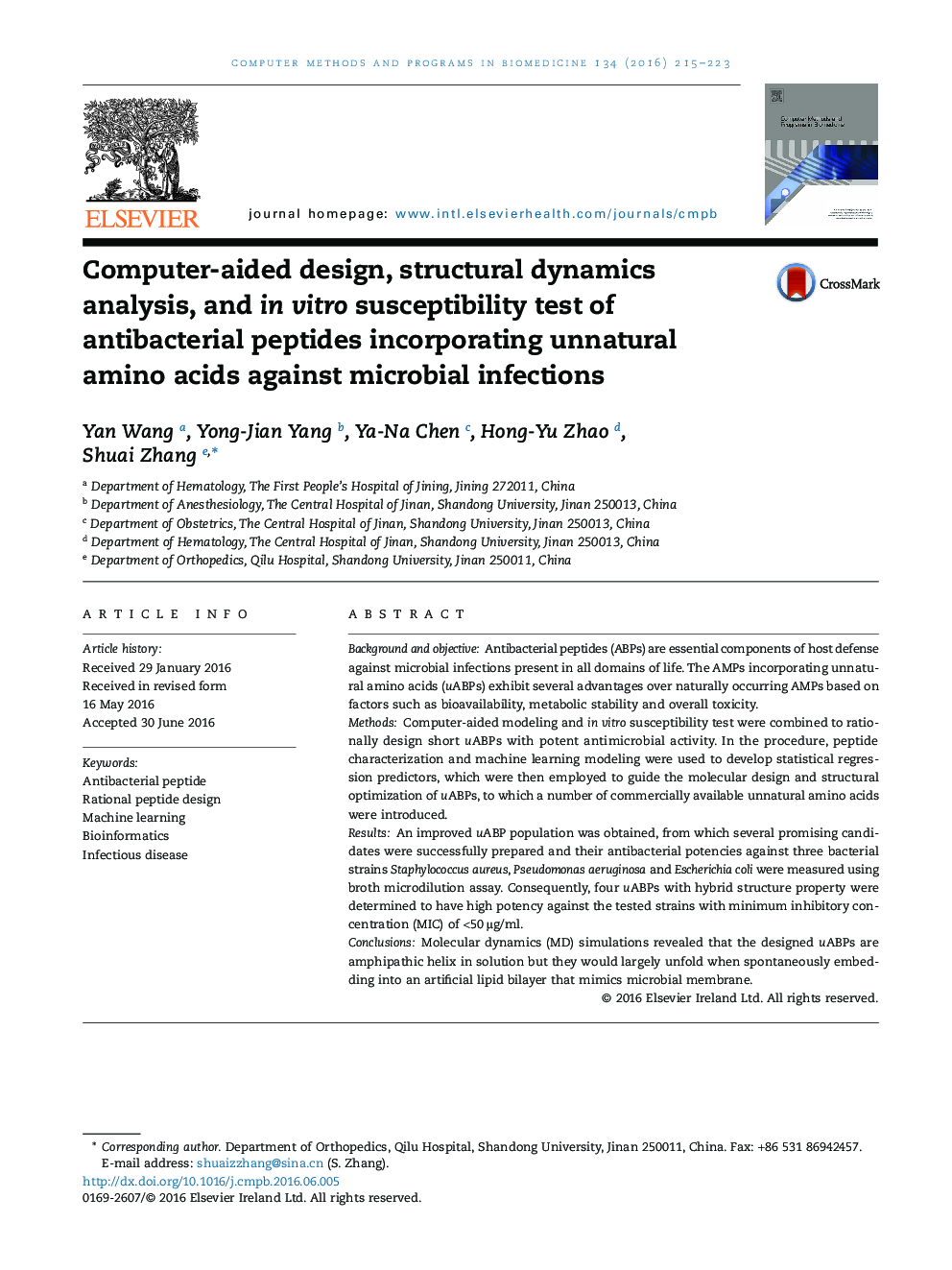| کد مقاله | کد نشریه | سال انتشار | مقاله انگلیسی | نسخه تمام متن |
|---|---|---|---|---|
| 466300 | 697819 | 2016 | 9 صفحه PDF | دانلود رایگان |
• An integrated protocol is described to design antibacterial peptides containing unnatural amino acids.
• A variety of machine learning predictors are developed, optimized, and validated through a synthetic approach.
• The predictors are used to guide computer-aided peptide design.
• Four designed peptides are measured in vitro to have potent antibacterial activity.
• The potent peptides can spontaneously embed into an artificial lipid bilayer.
Background and objectiveAntibacterial peptides (ABPs) are essential components of host defense against microbial infections present in all domains of life. The AMPs incorporating unnatural amino acids (uABPs) exhibit several advantages over naturally occurring AMPs based on factors such as bioavailability, metabolic stability and overall toxicity.MethodsComputer-aided modeling and in vitro susceptibility test were combined to rationally design short uABPs with potent antimicrobial activity. In the procedure, peptide characterization and machine learning modeling were used to develop statistical regression predictors, which were then employed to guide the molecular design and structural optimization of uABPs, to which a number of commercially available unnatural amino acids were introduced.ResultsAn improved uABP population was obtained, from which several promising candidates were successfully prepared and their antibacterial potencies against three bacterial strains Staphylococcus aureus, Pseudomonas aeruginosa and Escherichia coli were measured using broth microdilution assay. Consequently, four uABPs with hybrid structure property were determined to have high potency against the tested strains with minimum inhibitory concentration (MIC) of <50 µg/ml.ConclusionsMolecular dynamics (MD) simulations revealed that the designed uABPs are amphipathic helix in solution but they would largely unfold when spontaneously embedding into an artificial lipid bilayer that mimics microbial membrane.
Graphical AbstractFigure optionsDownload high-quality image (135 K)Download as PowerPoint slide
Journal: Computer Methods and Programs in Biomedicine - Volume 134, October 2016, Pages 215–223
